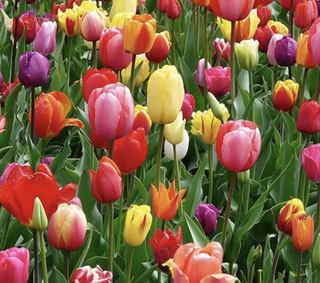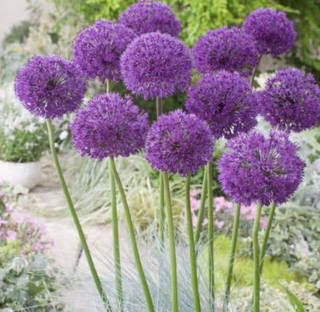What to do with your flower beds in September so they look twice as good next year
There is no greater joy in the garden year than planting up flowerbeds so make sure yours are prepped and primed now for next year's growing season
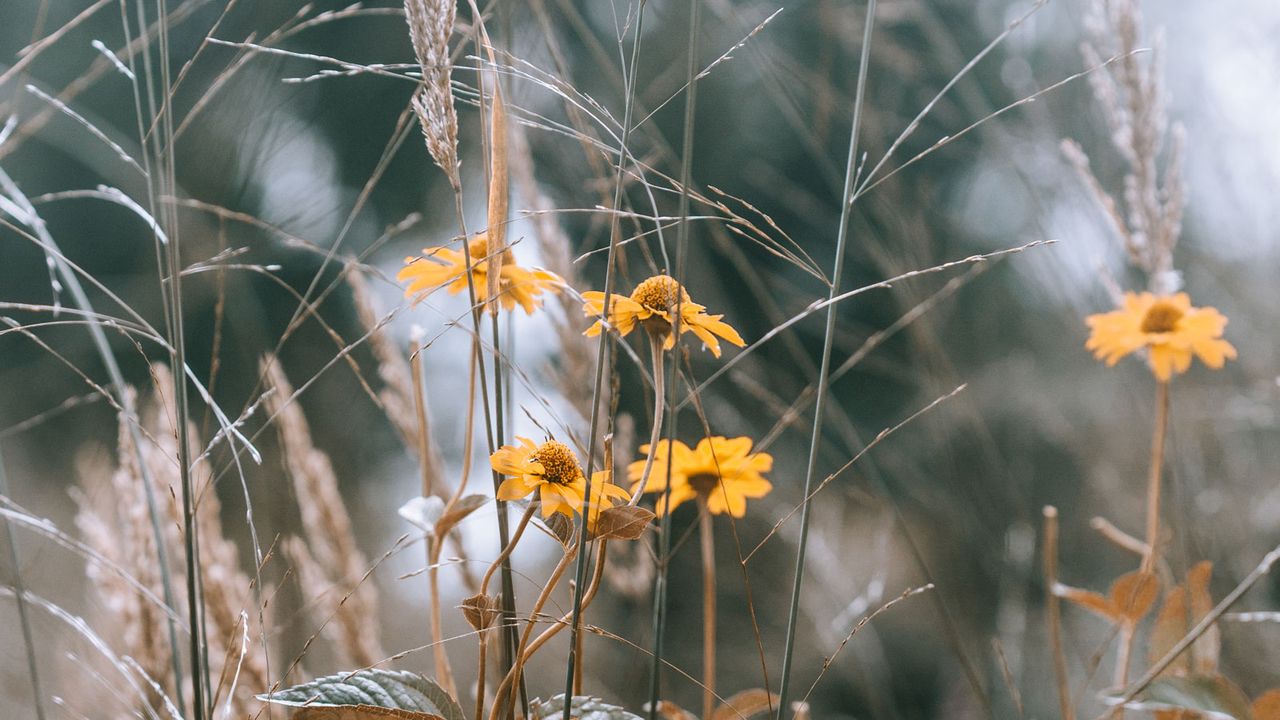
After a long hot summer your flower beds can be left looking a little tatty and in need of attention. If you're reading this your flower beds have probably started to fade and you're already thinking about how best to prep them before winter sets in so they're ready for next spring.
If you're lucky you may still have a few black eyed Susans, coneflowers or other late flowering perennials blooming here and there, adding much-needed fall interest. This could be the reason why you're delaying getting out there to sort out your flower beds, but if everything has mostly finished flowering it's definitely time to start the big tidy up.
The work you put into your flower beds this fall will have a big impact on how they do next year. Working on flower beds in the spring is a joy with so much promise of what is to come but fall maintenance can get pushed down the list as you tend to spend less time in the yard.
The thing is, it's just as important, if not more so, to put in some work now to ensure flourishing flower beds that not only look good but are also packed with healthy, thriving plants.
Now find out how what to do with your flower beds in fall. Following our 6 simple steps is all it takes to get them spring ready.
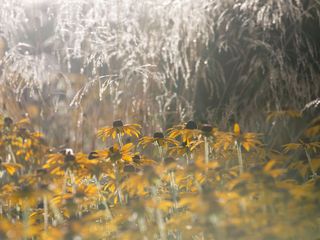
Black eyed Susans are usually one of the last flowers in the fall garden
1. Tidy up faded flowerbeds
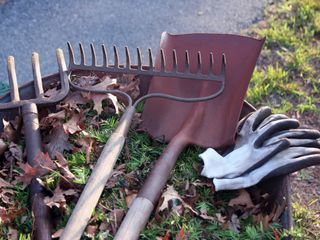
It's amazing how quick it is to spruce up flowerbeds. One of the first things to do is collect up any dead twigs and stems, spent flower blooms and petals, and leaves that have accumulated on the surface of the soil. Use a rake for speed, or a mini rake if you need to go more carefully in between plants. Remember that any plant matter can be added to your compost heap, as long as it's disease and fungus free.
Next snip off any dead stems, flowers and leaves still attached to perennial plants. As your annual plants begin to fade, remove them quickly from the flowerbed as decaying foliage is ideal for harbouring pests. Snip off any seed heads from the plant to save and grow next year, then add the old foliage to your compost pile.
Now is the best time for pruning any shrubs in your flowerbeds too. Neat lines of clipped bushes add crucial stand-out factor to the fall garden. Pruning stops shrubs taking over, letting more light into the flowerbed to benefit any smaller plants that may have been stuck in their shadow.
2. Get rid of bothersome weeds
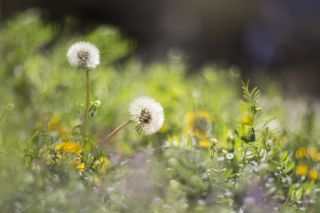
If your flowerbeds are filled with weeds you might be tempted to leave it until spring to tackle them. They will just die back, right? If only. Even cooler weather is not enough to stop weeds spreading and multiplying throughout your flowerbeds. As other plants have died back the weeds can get an even firmer stronghold.
As summer fades, weeds begin to form seed heads. Leave them and these seeds will fall into the soil, where they will germinate with wild abandon, leaving you with many more weeds to deal with next spring.
Fall is the best time to get rid of the weeds in your flowerbeds once and for all. Start pulling them out by hand and make sure you get rid of every last one, roots and all. Otherwise they will take nutrients from the soil that your plants could otherwise be benefitting from, so make sure you are meticulous in your weed elimination.
3. Divide and propagate perennials (more plants!)
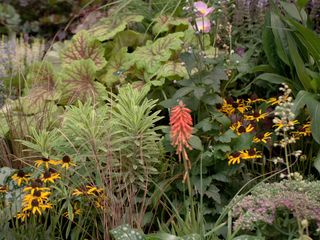
As they die back in fall most perennials need to have their foliage and stems cut back. There are one or two exceptions such as hydrangeas, which prefer to stay as they are to help protect them from cold weather. This is a plus, as it can add visual interest to the winter landscape when it's otherwise bare.
Look for perennial plants that seem to be packed in and short on space, and divide them up to create more plants. Choose a few sections of the plant to dig out, using back to back forks to lever them from the soil. You can always plant these in other areas of your yard or give them to a friend or neighbor. The remaining plant will now have more room to breathe and grow.
Make sure you carry out this maintenance work every fall as overcrowded perennials are more susceptible to disease and insect infestations as air can't circulate around them. On top of this, they usually don't produce as many blooms either.
4. Dig over and improve the soil
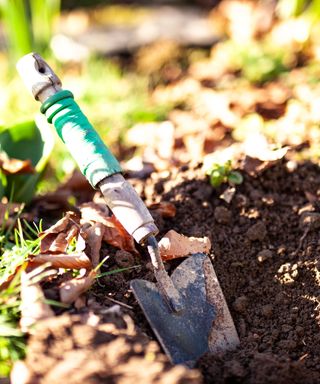
Unless you're a no-dig gardening disciple, you will need to dig over your flowerbeds after tidying them up. It's especially important to loosen any areas of hard, compact soil after a long hot summer to improve aeration and offer the best growing environment for your plants.
It's an ideal time to lift and store any tender bulbs planted in your flowerbeds that aren't hardy in your region. Do this once the leaves have died back and certainly before they are hit by first frost.
Late fall is also a good time to add compost to the soil. If you live in a cooler climate don't worry about forking it in as the freezing and thawing that takes place in winter will work it into the soil for you. Why not test your soil's pH too and make any necessary amendments to prep it properly for spring planting.
5. Plant spring bulbs now for early flowerbed color
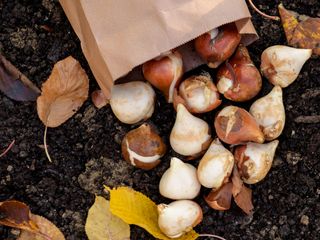
It's always lovely planting something new in your yard so take time out from the practical flowerbed stuff to plant some spring bulbs. As the days lengthen into spring the shoots will poke up through the soil to herald the new growing season.
Spring bulbs are a quick and easy way to add color to your flowerbeds. 'Bulbs that are hardy in your area are the best value for money,' says horticulturalist Jenny Rose Carey, former senior director at Pennsylvania Horticultural Society’s Meadowbrook Farm in Jenkintown. 'They should come up year after year and may be so successful that they multiply.'
Jenny suggests planting tulips and alliums if you don't have a lot of space in your flowerbed. 'They are perfect to add seasonal drama to the flowerbed as they rise up from the froth of lower-growing perennials.'
Another idea for small yards is to try layering bulbs in flowerbeds, planting the largest bulbs at the bottom of the hole, and graduating up to the smallest size bulbs on top, each with a layer of soil in between.
6. Mulch flowerbeds to feed soil and insulate plants
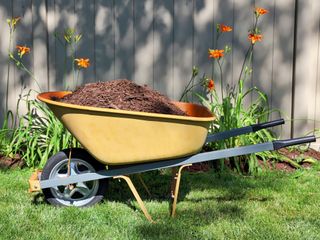
You may already mulch in spring, especially if you live in an area prone to drought. But in many ways, fall mulching is even more important, particularly if you live in a cold climate. Once harsh winter weather arrives the roots of unprotected plants can be damaged. Goodness can also be leached out of the soil from wind, rain and snow. Bare flowerbeds are also vulnerable to weed infestation, whatever the weather.
'Organic mulch is made from shredded wood, leaf mold, or compost that breaks down and assimilates into the soil, providing some nutrients and eventually improving the soil structure,' explains Jenny Rose Carey. 'A thick layer of organic mulch can prevent the germination of weed seeds. I like to use well-broken-down leaf mold or compost as a mulch in my flowerbeds.'
Mulching flowerbeds boosts soil structure, so your plants will grow stronger the following season. Leave any existing mulch and top up with a 3 to 4 inch layer of new mulch. Don't worry about digging it in as the worms will do this for you.
Follow these 6 steps and you will cover everything you need to know about what to do with your flowerbeds in fall.
Be The First To Know
The Livingetc newsletters are your inside source for what’s shaping interiors now - and what’s next. Discover trend forecasts, smart style ideas, and curated shopping inspiration that brings design to life. Subscribe today and stay ahead of the curve.
Lifestyle journalist Sarah Wilson writes about flowers, plants, garden design and trends. She has studied introductory garden and landscape design and floristry, and also has an RHS Level 2 qualification in the Principles of Plant Growth and Development. In addition to homesandgardens.com and livingetc.com she's written for gardeningetc.com, Real Homes, Modern Gardens and Country Homes & Interiors magazines. Her first job was at Elle magazine, during which time a trip to the beautiful La Colombe d'Or in St-Paul-de-Vence led to an interest in writing about all things botanical. Later as lifestyle editor at Country Homes & Interiors magazine the real pull was the run of captivating country gardens that were featured.
-
 Leonardo DiCaprio's Design Team Just Dropped a Charming Retro-Inspired Homewares Collab with West Elm
Leonardo DiCaprio's Design Team Just Dropped a Charming Retro-Inspired Homewares Collab with West ElmFrom bold patterns to alluring textures and vintage-inspired silhouettes, this collection is nostalgia, stylized
By Devin Toolen Published
-
 Designing a Home for 7 (Plus Pets) Is No Easy Feat — This Designer Took the Challenge Head-On, and the Results Are Stunning
Designing a Home for 7 (Plus Pets) Is No Easy Feat — This Designer Took the Challenge Head-On, and the Results Are StunningThis mid-century home demonstrates how practicality and style go hand-in-hand when designing for large families
By Devin Toolen Published
